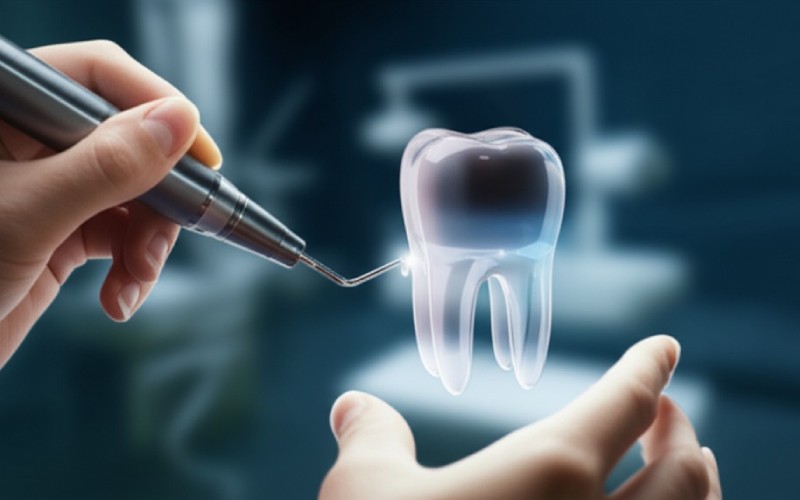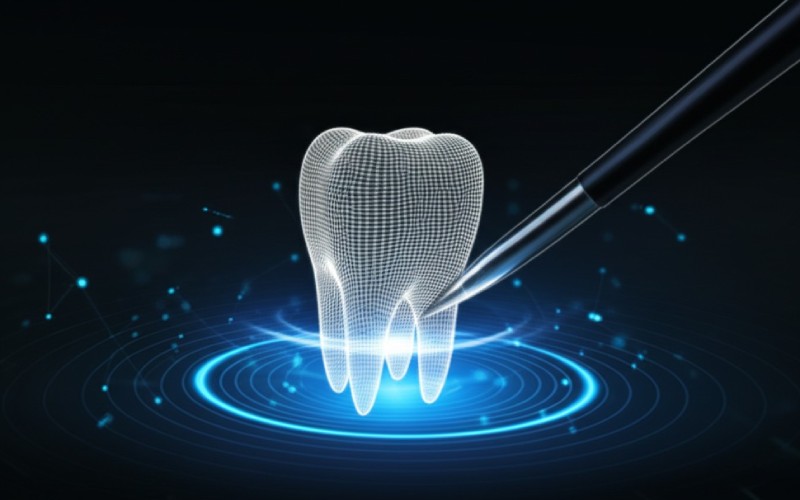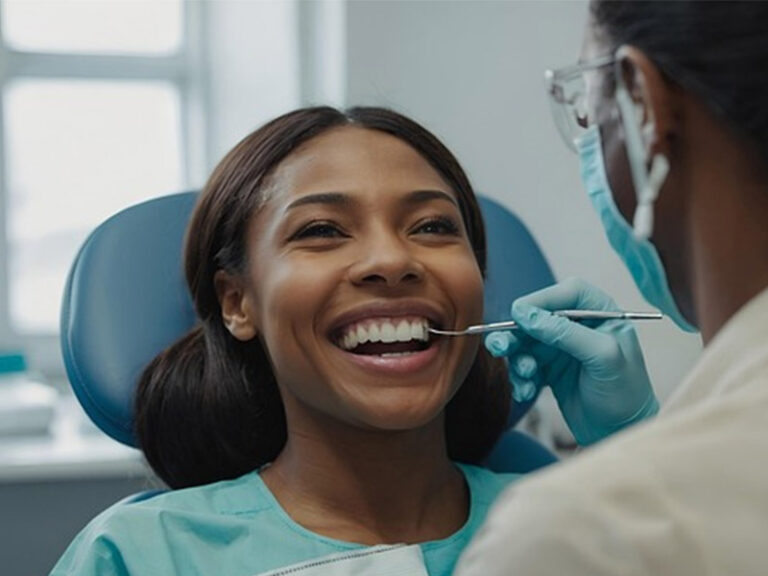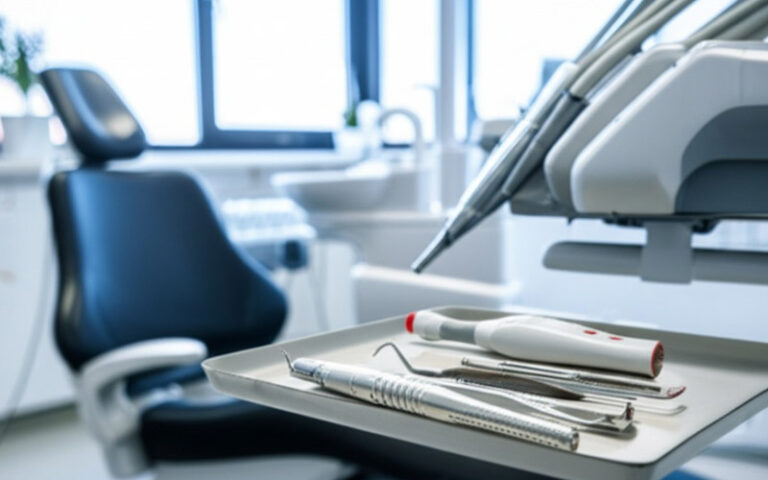
The Impact of Haptic Simulators in Preclinical Dental Education: A Virtual Reality Clinical Experience
Something truly special is happening in dental education. We are moving beyond plastic teeth and into a world of virtual reality. This new haptic technology is changing how we prepare dental students for their future careers. In this article, I’m going to walk you through exactly what haptic feedback is. I will explain how it gives students a realistic clinical experience long before they see a real patient. If you are a student, a teacher, or just curious about the future of medicine, this is for you.
Table des matières
What is This New Haptic Technology in Dental Education?
You might be wondering what this fancy term, haptic technology, even means. It’s actually quite simple. Haptics is the science of touch. A haptic device creates an experience of touch by applying forces, vibrations, or motions to the user. Think about your phone buzzing in your pocket. That’s a very simple form of haptics. Now, imagine that technology being used in a much more advanced way. In dental education, this means a student can hold a tool that feels just like a real dental drill.
A student looks at a 3D model of a tooth on a screen. They use a special tool, which is connected to a computer. As they move the tool to touch the virtual tooth, the system sends signals back. This is called haptic feedback. The student can feel the texture of the enamel. They can feel the difference between healthy tooth structure and a soft cavity. It’s an amazing step forward for the training of dental students. This is a core part of the introduction of a dental virtual learning world.
This technology bridges the gap between textbook knowledge and real-world skill. For years, the training of dental professionals has relied on plastic models. While helpful, these models don’t feel real. The use of haptic systems changes that. This haptic and force feedback technology makes the training experience feel genuine. It is a key part of modern preclinical training of dental students.
How Does Virtual Reality Haptic Feedback Help Dental Students?
So, how does this work in practice? It all comes down to creating a believable virtual reality. A student sits down at a station with a screen and a haptic tool. The screen shows a 3D tooth. This isn’t just a picture; it’s a fully interactive digital model. Using the tool, the student can start to perform dental procedures, like drilling out a cavity. This is where the magic of haptic virtual reality simulation training comes in.
When the virtual drill touches the tooth’s surface, the haptic device pushes back. It provides force feedback in a virtual world. The student feels the resistance of the hard enamel. If they drill deeper and reach the softer dentin, the resistance changes. It feels different, just like it would in a real patient’s mouth. This realistic feeling is created by recent advancements in haptic feedback technology. This allows students to practise complex tasks over and over.
This kind of simulation training is a game-changer for dental students. It helps them build muscle memory. They learn how much pressure to apply and what different parts of a tooth feel like. It’s a safe space to make mistakes and learn from them without any risk. This virtual reality haptic tool is one of the most exciting advancements in haptic feedback technology. It will certainly improve the skills of dental students.

Why is Preclinical Training So Important for Young Dental Students?
Before dental students can work on real patients, they go through something called preclinical training. This is a critical part of their dental education. During this time, they learn the basic hands-on skills they will need for their entire careers. Think of it as learning the alphabet before you can write a book. You have to master the fundamentals first.
Traditionally, this preclinical dental training has been done on plastic teeth set in a plastic jaw. Students would drill into these teeth for hours. It helped them learn control and precision. However, I have always felt something was missing. The plastic doesn’t feel like a real tooth. It doesn’t give you the subtle clues that tell you if you are doing a good job. This is where the old training method falls short.
This is why the move towards a haptic simulator is so important. Good preclinical training builds a student’s confidence. When they finally sit down with their first patient, they need to feel ready. Poor training can lead to anxiety and mistakes. The goal of preclinical dental education is to make the jump from the classroom to the clinic as smooth as possible. Haptic technology helps to close the gap between preclinical and clinical work.
Can a Haptic Simulator Really Provide Students a Realistic Feeling?
Can a computer really copy the feeling of working inside a human mouth? After seeing a haptic virtual reality simulator in action, my answer is a strong yes. These systems are designed to provide realistic tactile force feedback. This means they don’t just vibrate; they create a true sense of physical resistance.
The software behind a haptic-based dental simulator is incredibly detailed. It maps out the different layers of a tooth, each with its own density. When a student uses the dental simulator, the computer calculates the forces in real-time. The result is a surprisingly real feeling. This experience helps students understand the tooth in a new way. The use of haptic feedback makes all the difference.
This realism is a key part of the effectiveness of haptic feedback devices. A student trained with the haptic system learns what a real tooth feels like. This makes the training for dental students much more valuable. It is a huge leap from the old plastic models. The haptic dental experience prepares them for the complexities of real dental medicine.
What are the Main Benefits of Using Haptic Feedback Devices?
The benefits of using haptic feedback devices are clear. First, it makes learning much safer. Dental students can practice over and over without any risk to a patient. They can make mistakes, learn from them, and try again. This builds confidence and skill in a stress-free setting. This is a huge plus for any dental school.
Second, this technology allows for better feedback. A good dental trainer can watch a student work on a dental simulator. But the simulator itself also gives feedback. It can show the student exactly where they drilled too deep or not deep enough. Some systems can even record the student’s movements and provide a score. This objective feedback is a powerful tool for improvement. The effectiveness of haptic feedback is easy to see.
Finally, using haptic technology can improve the performance and satisfaction of dental students. They feel more prepared and engaged in their learning. The satisfaction of dental students is important for a successful dental education program. This haptic training makes learning more like a video game, which is fun and motivating for many young people. The impact of haptic simulators on student morale is very positive.
How Does Haptic Training Help Students to Achieve Better Skills?
The goal of any training is to improve skills. Haptic training is especially good at developing what we call psychomotor skills. These are the skills that connect the brain to the hands. For a dentist, this is everything. It’s the ability to make very small, precise movements in a tight space. This is where haptic virtual reality simulation training shines.
A haptic simulator helps students to achieve a higher level of control. It trains their hands to feel the difference between healthy and unhealthy tissue. This is a skill that is very hard to teach from a book. This kind of computerized dental simulation training helps develop fine motor skills in dental students. The constant force feedback in a virtual environment trains their muscles and their brain at the same time.
Studies on the effectiveness of virtual reality have shown positive results. Dental students who use a haptic virtual reality simulator often perform better in tests. It helps them master skills in preclinical operative dentistry. The simulation in dental education helps students learn faster and retain information better. This new haptic system enables students to become better clinicians.
Are Haptic Simulators Replacing Traditional Training Methods?
This is a question I hear a lot. Are we throwing away the old ways of teaching? The answer is no. Haptic simulators in preclinical dental education are not meant to replace everything. Instead, they are a powerful new tool to be used alongside traditional methods. Think of it as adding a new club to your golf bag. You still need the other clubs, but this new one lets you do things you couldn’t do before.
The best approach combines the new with the old. A student might start on a haptic simulator to understand the feel of a procedure. Then, they might move to a plastic model to practice in a physical space. This mix of haptic and conventional simulators can be very effective. It gives dental students a well-rounded preclinical and clinical training experience.
The role of the teacher is also still very important. Dental educators guide the students. They help them understand the feedback from the haptic simulation. They answer questions and provide support. The technology is a tool, not a replacement for good teaching. The collaboration between dental educators and technology developers is key to success.
How Are Dental Schools Bringing Haptic Technology into the Classroom?
More and more, dental schools are seeing the value of haptic technology. The integration of haptic systems into the dental curricula is a big step. It requires investment and training for the teachers. But the schools that are doing it are seeing great results. They are finding that it enhances their preclinical dental education programs.
Bringing in a virtual reality dental training simulator takes planning. The school needs to create space for the simulators. Teachers need to learn how to use the haptic device and how to teach with it. They need to figure out how to best fit this new tool into their existing courses. The integration of haptic feedback technology is a process.
But the effort is worth it. Once the haptic virtual reality simulator is in place, it becomes a valuable resource. It allows students to practise on their own time. It gives teachers a new way to assess the dental skills of their students. The use of haptic simulators is becoming a sign of a modern and forward-thinking dental education program. This feedback technology in dental education is now widely used in dental schools around the world.

What is the Impact of Haptic Simulators on Student Performance?
When we talk about new technology, we have to ask: does it actually work? What is the impact of haptic simulators on how well students do? The evidence is growing, and it looks very promising. Research is showing that this kind of dental training helps students learn faster and perform better.
One of the key areas of improvement is in cavity preparation. This is a basic but very important skill. Studies have looked at the performance of undergraduate dental students using these simulators. They often show that students who used the virtual reality simulator on dental tasks were more accurate than those who only used old methods. The impact of the haptic virtual tool is real.
This improvement in skill makes sense. The haptic simulation gives students a chance to practice in a way that is very close to reality. This helps them build the fine motor skills and confidence needed for success. The effectiveness of haptic feedback devices in preclinical work leads to better performance when students move to the clinic. It improves the overall dental students’ motor skills.
What Does the Future Hold for Virtual Reality in Dental Training?
The future of virtual reality in dental medicine is incredibly bright. The technology is only getting better and more affordable. We can expect to see even more realistic simulators in the coming years. Imagine a haptic 3d virtual reality dental system that can perfectly copy any kind of dental procedure, from a simple filling to a complex surgery.
We will also likely see haptic technology used in more dental specialties. It could be used to train for root canals, implants dentaires, or even orthodontic work. The possibilities are almost endless. This virtual reality training will become a standard part of dental training for all dental students.
As the technology improves, it will become an even more powerful tool for dental educators. The haptic technologies in dental education will allow for personalized learning plans. A dental virtual simulator could identify a student’s weak areas and create special exercises to help them improve. The future will be a mix of great teaching and amazing technology, all working together to train the best dentists possible. This feedback technology in dental training is here to stay.




